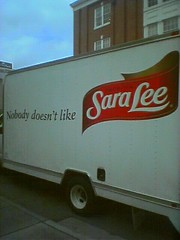Pretend you are the Director of Marketing for a business or organization. A tech company approaches you and they ask if they can put their logo on all of your promotional materials. All they want is a little space in the corner of each brochure, billboard, business card, television spot and newspaper ad you pay to produce. Preferably in color. But they can’t pay you for it. They need you to do this for them as a favor, for free.
What would you say?
If you wouldn’t take that deal, why in the world would you give Facebook, Twitter, Instagram or any other social media company free advertising space on your real-world promotional efforts?
If you get a few precious seconds of someone’s attention as they skim through your thing, why do you want them to spend part of that time thinking about someone else’s thing?
Continue reading "Why are you giving social media companies free marketing?"



